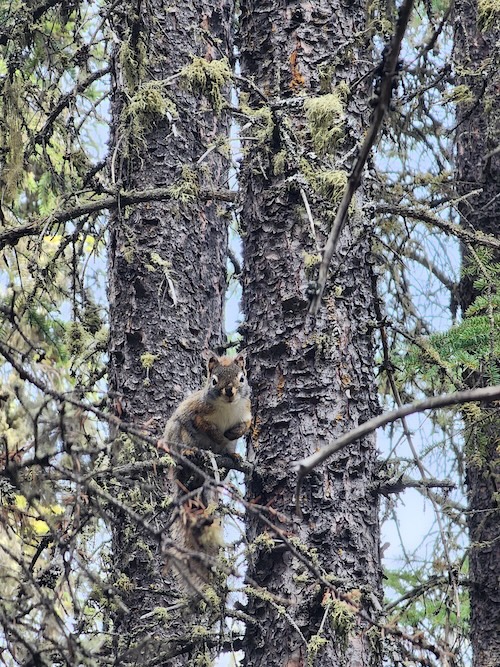Researchers use AI to track global squirrel hot spots
Kristin Summerlin
907-474-6284
June 17, 2024
Squirrels are arboreal acrobats that spread tree-generating seeds, mushrooms and fungi spores and serve as food for predators. As important as squirrels are to ecosystems, their exact habitat needs and ranges are not widely known.
In a recent study published in Scientific Reports, a team of University of Alaska Fairbanks researchers used novel artificial intelligence and citizen science methods to validate locations of large and small populations of the more than 300 species of squirrels globally. Researchers believe this strategy — using broad ecological patterns — can help guide efforts to maintain biodiversity in ecosystems.

A squirrel pauses in a spruce tree in the boreal forest near Fairbanks, Alaska.
“Having a better understanding of where the global squirrel hot spots are provides crucial information on what habitats to prioritize for the preservation of the global squirrel population,” said Moriz Steiner, a graduate student in the UAF Department of Biology and Wildlife and lead author of the paper. “Preserving biodiversity is paramount to maintaining the health of our ecosystems across the planet. Squirrels may be small, but they play a large role in most ecosystems.”
Without cloud computing, it would not have been possible to model and map all global squirrel species at once while also considering over 100 environmental variables, according to the research team.
“The study sets the stage for quantifying repeatable baselines as a best-professional practice from open access data using a workflow for modern global conservation management,” said Falk Huettmann, a professor with the UAF Institute of Arctic Biology. “This has never been done before on a global level, especially for marginalized species like squirrels.”
The team used machine learning, big data sets from the Global Biodiversity Information Facility and citizen science similar to a previous study examining habitat locations of the great gray owl.
However, the study of the global squirrel hot and cold spots is groundbreaking, using the largest publicly accessible data set of over 130 environmental predictors ⸺ environmental variables such as proximity to world-protected areas, urban population areas, human influence, populations of threatened mammals, and climate predictors such as temperature and humidity.
The large amounts of data for the study were processed using a grant that allowed the team to work with Oracle and its cloud computing infrastructure. The study also demonstrated that the modeling workflow can be replicated or executed by other researchers, a task that has previously been difficult to overcome due to the lack of computational power and publicly available data.
While the study focused on squirrels, Steiner and Huettmann envision the AI modeling research presented in the paper as a tool for modeling species more broadly.
The authors suggest that AI is necessary in species modeling to better grasp the complexity of the underlying challenges in managing global ecological systems.
235-24


